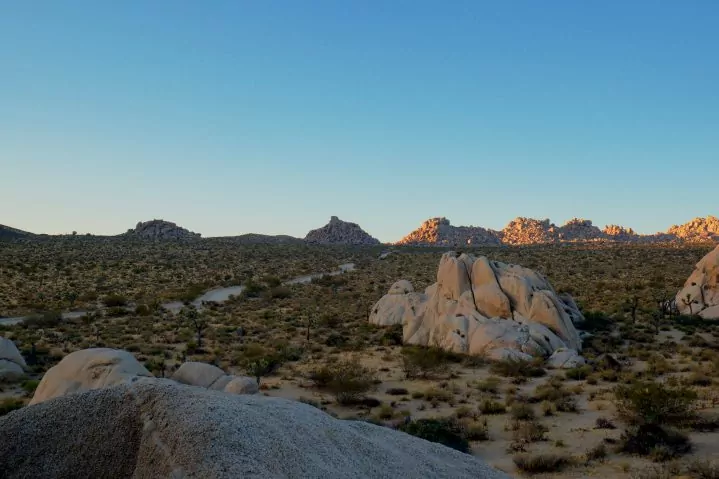Joshua Tree National Park is known for its stunning landscapes, unique vegetation, and intriguing rock formations. One of the most fascinating aspects of this iconic park is the mysterious origins of the rock formations that dot its desert landscape. These rocks, sculpted by wind and weather over millions of years, hold clues to the geological history of the region.
Formation of Joshua Tree’s Rock Formations
The rock formations in Joshua Tree National Park are primarily composed of granite, which is a type of igneous rock that forms from the cooling of molten magma deep within the Earth’s crust. Over millions of years, the granite rocks that make up Joshua Tree’s unique formations have been exposed to the elements, shaping them into the striking features we see today.
Wind and water erosion have played a significant role in sculpting the rocks of Joshua Tree. The powerful forces of nature have gradually worn away the surface of the rocks, creating intricate patterns and shapes that seem almost otherworldly. The unique shapes of the rock formations are a testament to the slow and relentless power of erosion over time.

Credit: wildlandtrekking.com
Geological History of Joshua Tree
The geological history of Joshua Tree National Park dates back millions of years to a time when the region was covered by shallow seas and vast deserts. The rocks of the park tell the story of ancient volcanic activity, tectonic movements, and climatic changes that have shaped the landscape over eons.
One of the most iconic rock formations in Joshua Tree is the monzogranite boulders that are scattered throughout the park. These boulders are the result of a process known as exfoliation, where the outer layers of the rock peel away due to changes in temperature and pressure. This process has created the unique rounded shapes of the boulders that are a hallmark of the Joshua Tree landscape.

Credit: coachellavalleyweekly.com
The Mystery of the Joshua Trees
One of the most enigmatic features of Joshua Tree National Park is the namesake Joshua trees that dot the desert landscape. These unique trees, which are actually a type of yucca plant, are shrouded in mystery and folklore. Legend has it that the Joshua tree was named by Mormon settlers who thought the tree’s outstretched branches resembled the biblical figure Joshua reaching out in prayer.
The Joshua trees play a crucial role in the ecosystem of the park, providing food and shelter for a variety of wildlife, including birds, insects, and mammals. The trees are also an important symbol of the resilience of life in the harsh desert environment, with their ability to survive and thrive in the arid conditions of the Mojave Desert.
Visiting Joshua Tree National Park
If you’re fascinated by geology, botany, or just the beauty of the natural world, a visit to Joshua Tree National Park is a must. The park offers a range of activities for visitors, including hiking, rock climbing, stargazing, and wildlife watching. Whether you’re exploring the rock formations, hiking through the desert, or simply taking in the stunning vistas, Joshua Tree is a place that will leave you in awe of the wonders of the natural world.
As you wander through the park, take a moment to appreciate the ancient rocks that have stood the test of time, the mysterious Joshua trees that have witnessed centuries of history, and the vast desert landscape that stretches out before you. Joshua Tree National Park is a place of wonder and beauty, where the mysteries of the natural world are waiting to be discovered.
Frequently Asked Questions
What Are Joshua Trees?
Joshua Trees are unique species of trees that grow in the Mojave Desert.
What Are The Rock Formations In Joshua Tree?
The rock formations in Joshua Tree are made of granite, formed over 100 million years ago.
How Did Joshua Trees Get Their Name?
Joshua Trees were named by Mormon pioneers, who thought the trees looked like the biblical figure Joshua raising his arms in prayer.
What Makes Joshua Tree Rock Formations Unique?
The unique shape and size of the granite formations in Joshua Tree are a result of millions of years of erosion and weathering.
Conclusion
The origins of the rock formations in Joshua Tree National Park are a testament to the power of nature to shape and mold the landscape over millions of years. From the towering monzogranite boulders to the twisted branches of the Joshua trees, the park is a place of mystery and beauty, where the forces of geology and biology converge to create a truly unique environment.
So, whether you’re a geology enthusiast, a nature lover, or simply someone looking for a place to connect with the natural world, Joshua Tree National Park offers a one-of-a-kind experience that will leave you inspired and awestruck. Come explore the mysteries of Joshua Tree and discover the wonders that await in this iconic desert landscape.




